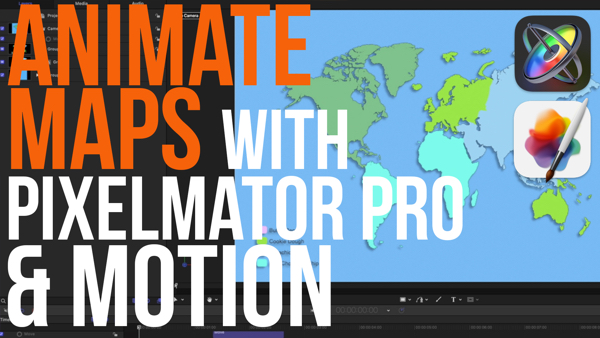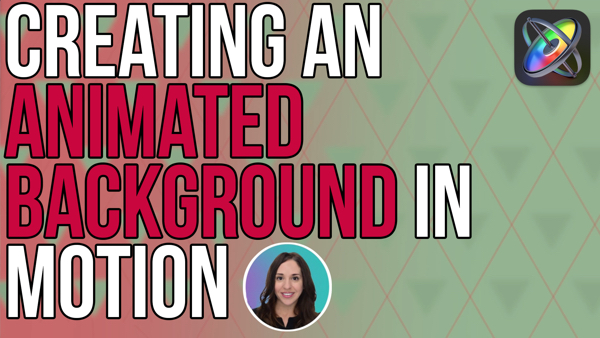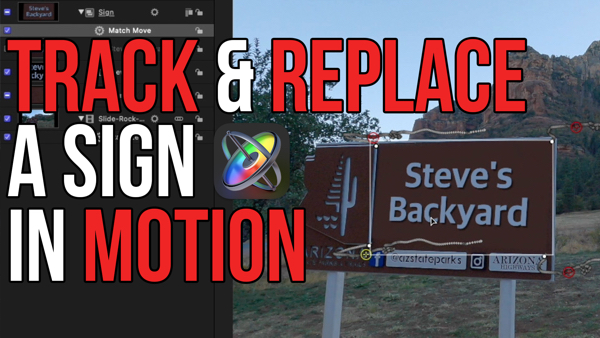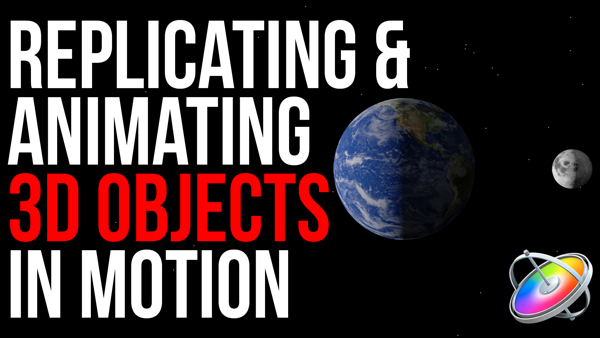How to Make a Whiteboard Animation
In this episode, Mark will show you how to animate text as if it’s being written on a whiteboard. His recipe includes shapes, behaviors, and an image mask.
In this episode, I’ll show you how to animate text as if it were being written on a whiteboard.
I’m Mark Spencer from RippleTraining.com. Welcome to Motion Magic where you’ll learn visual effects and motion graphics in under 5 minutes.
Here I am in Motion. I’ve used a Gradient Generator from Motion’s library for the whiteboard and I purchased a stock image of a hand with a marker. I’ve put this image in its own group; you’ll see why in just a moment.
First, I need some text in the top-level group so I’ll select the Gradient layer before selecting the text tool.
I’ll click in the Canvas, but before typing I’ll select a font and color in the Heads-Up Display, then I’ll type my text.
Then I’ll press Esc to exit the text tool and tweak the text to my liking.
I’ll center-align the text, then in the Properties Inspector I’ll set Position X to 0 to center the text horizontally. Then if needed I’ll drag the text layer below the Hand group.
To animate the text onto the screen, I’ll reveal it with a mask. So I’ll first select the line tool and draw a line across the text, holding down the Shift key to make it horizontal. Then I’ll press Escape and adjust the Width in the HUD and the position in the Canvas to cover the text. I can right-click the line and choose Edit points to adjust the start and end of the line to just cover the text. If the label gets in the way, I can hold down the Spacebar and drag to reposition the Canvas, then adjust the point. Then press Shift-Z to recenter the Canvas. Shift-S returns me to the default selection tool.
Now from the Behaviors pop-up menu I’ll choose Shape > Write On, then trim this behavior in the miniTimeline to last about 3 seconds.
If I play that back now the line animates onto the screen over three seconds. To have it affect the text, I’ll select the text layer, then from the Object menu, I’ll choose Add Image Mask.
Then, I’ll drag the line to the Mask Source well in the HUD. Now when I play, the text animates onto the screen.
To have the hand follow the text animation, I’ll select the Hand Group and position it at the start of the text.
Then, I’ll use the Behaviors shortcut to select Basic Motion > Motion Path.
I need to match the duration of this behavior to the Write-On behavior so I’ll press F6 to open the Timeline, and trim it back holding down the Shift key to snap to the other behavior’s Out point.
I’ll press Shift+Z to fit the canvas back to the window and play. The hand moves roughly to match the text animation.
To tweak it, I’ll move the playhead to the first few frames and adjust the starting control point, then move to the end and adjust the ending control point. Then scrub through and adjust as needed.
To give the hand some more life, I’ll reselect the Hand group, then in the Properties Inspector, I’ll open position, right-click on Position Y and choose Add Parameter Behavior > Wriggle. In the Timeline I’ll trim it to match the other two behaviors, then in the Inspector, I’ll change the Amount to 20, the Apply Mode to Add and Subtract, the Frequency to 2, and the Noisiness to 0.7. These values are somewhat arbitrary, so find what works for you.
The chart is made with with lines and write on behaviors. I’ve saved it in the Library in favorites, so I can move the playhead to the end of the text animation, then drag in the chart over the gradient.
Click the Subscribe button below. If you have an idea, comment or suggestion, leave those below as well. Go to RippleTrainging.com for fast professional training on Final Cut Pro, Motion and DaVinci Resolve from industry professionals.
I’m Mark Spencer from RippleTraining.com. Welcome to Motion Magic where you’ll learn visual effects and motion graphics in under 5 minutes.
Here I am in Motion. I’ve used a Gradient Generator from Motion’s library for the whiteboard and I purchased a stock image of a hand with a marker. I’ve put this image in its own group; you’ll see why in just a moment.
First, I need some text in the top-level group so I’ll select the Gradient layer before selecting the text tool.
I’ll click in the Canvas, but before typing I’ll select a font and color in the Heads-Up Display, then I’ll type my text.
Then I’ll press Esc to exit the text tool and tweak the text to my liking.
I’ll center-align the text, then in the Properties Inspector I’ll set Position X to 0 to center the text horizontally. Then if needed I’ll drag the text layer below the Hand group.
To animate the text onto the screen, I’ll reveal it with a mask. So I’ll first select the line tool and draw a line across the text, holding down the Shift key to make it horizontal. Then I’ll press Escape and adjust the Width in the HUD and the position in the Canvas to cover the text. I can right-click the line and choose Edit points to adjust the start and end of the line to just cover the text. If the label gets in the way, I can hold down the Spacebar and drag to reposition the Canvas, then adjust the point. Then press Shift-Z to recenter the Canvas. Shift-S returns me to the default selection tool.
Now from the Behaviors pop-up menu I’ll choose Shape > Write On, then trim this behavior in the miniTimeline to last about 3 seconds.
If I play that back now the line animates onto the screen over three seconds. To have it affect the text, I’ll select the text layer, then from the Object menu, I’ll choose Add Image Mask.
Then, I’ll drag the line to the Mask Source well in the HUD. Now when I play, the text animates onto the screen.
To have the hand follow the text animation, I’ll select the Hand Group and position it at the start of the text.
Then, I’ll use the Behaviors shortcut to select Basic Motion > Motion Path.
I need to match the duration of this behavior to the Write-On behavior so I’ll press F6 to open the Timeline, and trim it back holding down the Shift key to snap to the other behavior’s Out point.
I’ll press Shift+Z to fit the canvas back to the window and play. The hand moves roughly to match the text animation.
To tweak it, I’ll move the playhead to the first few frames and adjust the starting control point, then move to the end and adjust the ending control point. Then scrub through and adjust as needed.
To give the hand some more life, I’ll reselect the Hand group, then in the Properties Inspector, I’ll open position, right-click on Position Y and choose Add Parameter Behavior > Wriggle. In the Timeline I’ll trim it to match the other two behaviors, then in the Inspector, I’ll change the Amount to 20, the Apply Mode to Add and Subtract, the Frequency to 2, and the Noisiness to 0.7. These values are somewhat arbitrary, so find what works for you.
The chart is made with with lines and write on behaviors. I’ve saved it in the Library in favorites, so I can move the playhead to the end of the text animation, then drag in the chart over the gradient.
Click the Subscribe button below. If you have an idea, comment or suggestion, leave those below as well. Go to RippleTrainging.com for fast professional training on Final Cut Pro, Motion and DaVinci Resolve from industry professionals.




